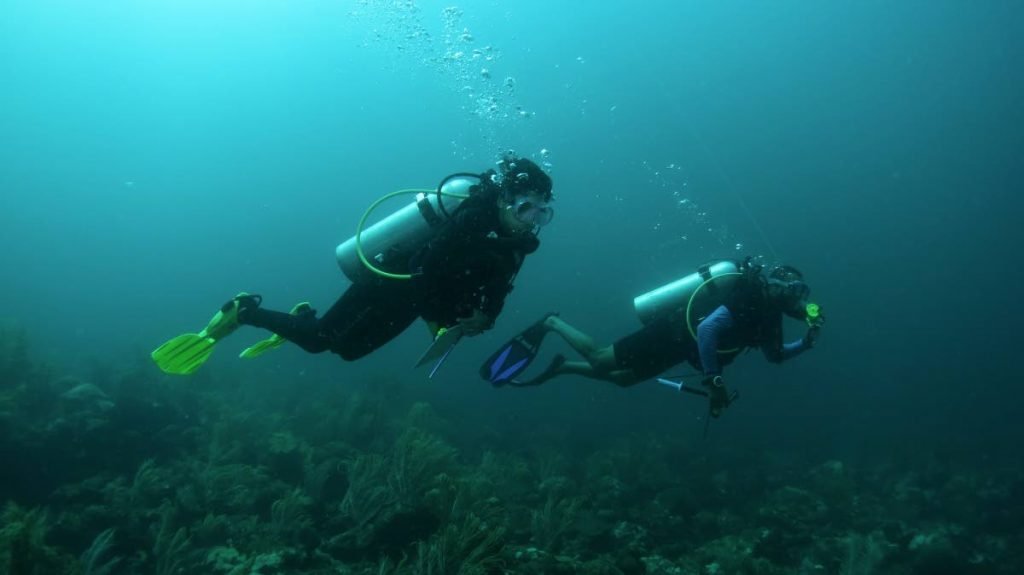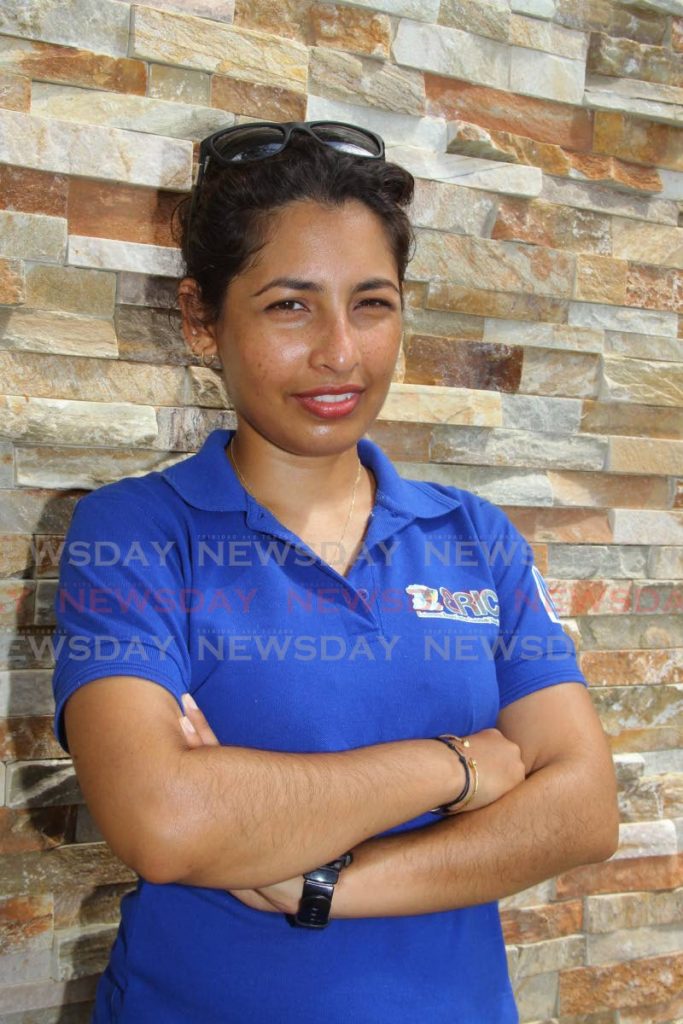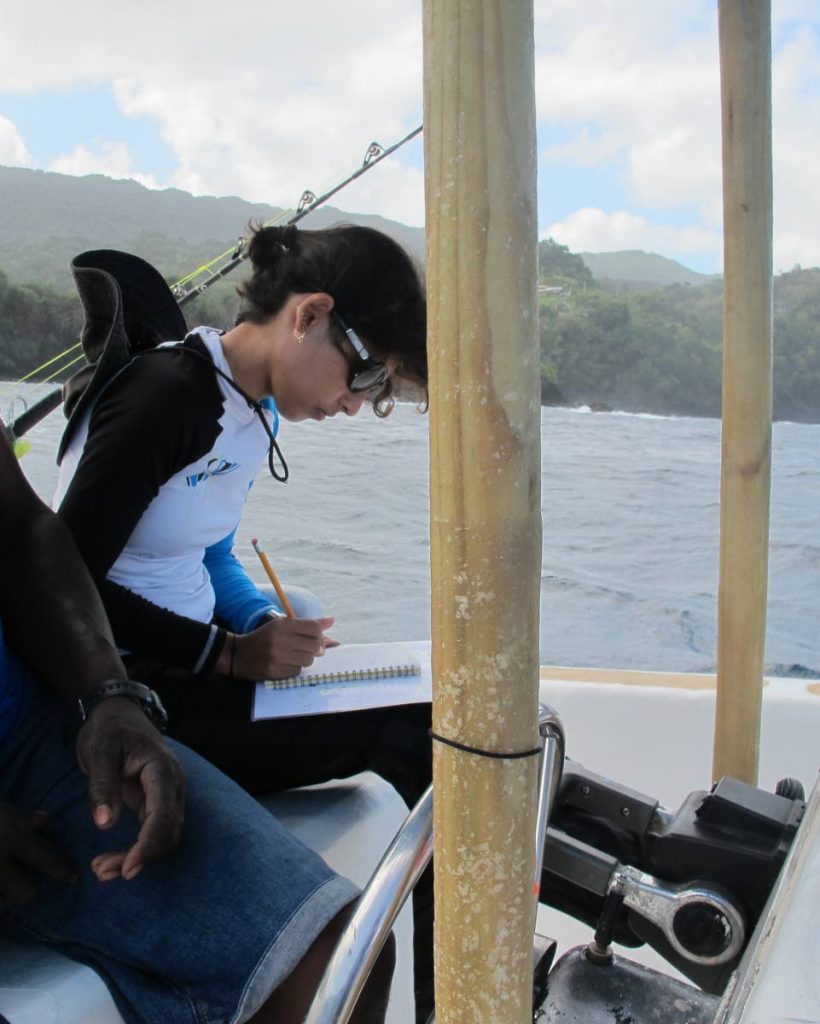Lanya Fanovich: Linking science to community

For most of Lanya Fanovich's life she had a fear of swimming, but today you can find her plunging into the waters off Tobago's northeast coast without thinking twice.
She proudly wears the title of marine biologist and research scientist at the Environmental Research Institute Charlotteville (ERIC) in Tobago. Her work at the the institute focuses on collecting data on the health of marine ecosystems in northeast Tobago to help educate communities about how they affect the environment and more importantly where possible, inform strategies to protect the environment.
Fanovich, 33, told WMN about her journey to becoming a marine biologist and the importance of her research work in Tobago.
"When I started UWI (University of the West Indies), marine biology wasn’t something I initially wanted to go into," she said recalling her undergraduate days.
At UWI St Augustine campus her major was zoology with a minor in marine ecology. While she knew she wanted to study animals, her interest were in terrestrial animals like amphibians and reptiles.
"Studying marine ecology as minor is what really piqued my interest. Professor John Agard was one of my professors and his enthusiasm for marine biology was quite contagious."
In particular she found love in learning about smaller marine organisms like molluscs and marine worms.

In 2009, she went on to do a master's degree in science and management of tropical biodiversity at UWI. Still enthused about marine biology, she took the opportunity in her master's thesis to dabble in the field. Her first attempt at marine research looked at the diversity of macroinvertebrates in TT's sandy beaches.
"When I realised that my interest was in marine biology I knew one of the first things I needed to do was learn to swim. There’s no way I could have gotten much far if I didn’t become comfortable in water," she said of learning to swim at 20. Overcoming her fear of swimming took time but is a decision she does not regret. It was important not only to her research but made her current work possible. To people who may be afraid of swimming like she once was, she said being in water just means staying calm and breathing.
After completing her master's in 2011, she worked as a UWI demonstrator until 2014 when she came across a job offer to work as a biologist at ERIC. The twist? The position offered entailed marine research in northeast Tobago, which immediately caught her interest. She successfully applied for the position offered but had to push herself even further out of her comfort zone.

"I first overcame my fear of water and drowning... now I was accepting this job where I had to go underwater in gear." The job required her to learn how to scuba dive but she did not think twice about taking the plunge. "I wanted to be able to explore underwater environments and the only way I could have done that was overcoming my fears."
Now, six years later, she is mainly working in Charlotteville, Parlatuvier and Speyside. Using a method named reef check, she surveys coral reefs in these areas to monitor the effect of humans on corals and the health of coral reefs. Part of her current work, on corals at ERIC, includes building an acropora coral nursery to help reintroduce them to northeast Tobago as their number's have decreased.
And she brushes shoulder with a few sharks from time to time. Coordinating a shark and ray programme, she uses cameras to survey and assess the diversity of sharks and rays.
In these communities,

she not only collects data but has a strong focus on building community participation to ensure environmental initiatives are successful.
"You have to involve community members in your environmental management strategy as a top down approach is bound to fail. Communities should not feel excluded or as if their interaction with the environment is going to be limited. It is important to have that sense of co-management."
Community members are taught basic marine biology, how to scuba dive and research techniques to assist with monitoring marine ecosystems.
"By teaching residents, they turn into communicators that can go into their villages and relate to their peers. They can help get the message across about the situation that their communities are faced with."
With all of her work she finds time to relax, though she admits it is rare. This balance is important to ensure she functions at an optimum level.
"I try to find time to snorkel. It’s relaxing and before you know it, you're in a zone and staring at things. Doing a little bit of art and craft has been something that has been relaxing. I like to be able to keep my hands engaged."
She also enjoys experimenting with food creations.
When possible, to ensure that she maintain a healthy social connection with family and close friends, she visits them.
Despite the sacrifices of time and social connections, she sees the effort of her work leading to something greater in the end.
In June 2019, she worked with the Tobago House of Assembly's (THA) Department of Environment to support the government's nomination of northeast Tobago for UNESCO's Man and Biosphere designation. The designation helps ensure greater investment in the area's protection.
"I’m hoping that over time my work can expand to the rest of Tobago.
"I think my goal is just as much as any other scientist which is to try to at least protect what we have remaining."
At ERIC, she is now closely working with the THA's Department of Marine Affairs and Fisheries and fishermen to create a sustainable management plan for the island's sharks and rays.
She is also working on documenting the distribution of the island's invasive brittle star species. While many may know of lionfish, there are smaller invasive species and she hopes to pursue her doctorate research on them to see how they change Tobago's landscape.
To young women who may want to get involved in marine biology, or any field of science, and may feel intimated, Fanovich advises, "Just go brave like I did and don't think it's out of reach.
"It may come easier for some and take a while for others but take the time and go brave."
Inspiration has also played a huge role in her development and she thinks it can for others as well. She encourages young girls to study the work of female scientists who have made strides. Some people who inspired her include TT deep-sea biologist Diva Amon and conservation biologist Michelle Cazabon-Mannette.
She holds a deep admiration for Sylvia "Her Royal Deepness" Earle, 84, who is a world-renowned marine botanist and biologist.
"She (Sylvia) is very active in the environment and very passionate about the marine environment at her age. I only hope I can get to her age and still be very active and passionate.”

Comments
"Lanya Fanovich: Linking science to community"